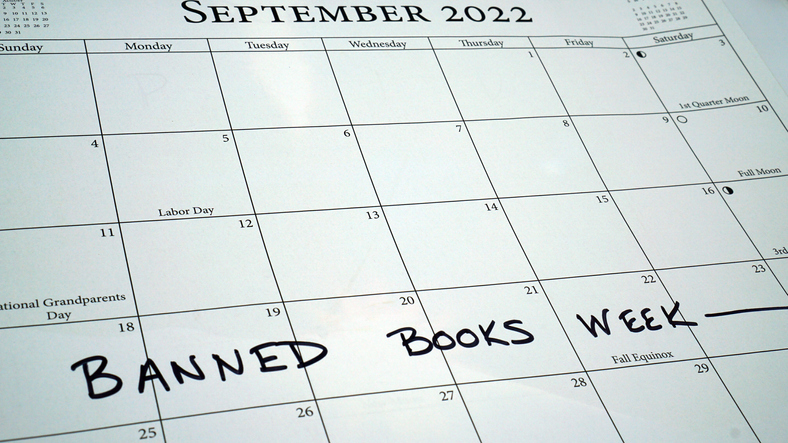|By Elizabeth Mohn|
Every September, the American Library Association (ALA) celebrates controversial books and people’s enjoyment of them during Banned Books Week. Usually held during the last full week of September, Banned Books Week 2022 is September 18–24.
The ALA began to commemorate Banned Books Week in the 1980s, when the organization noticed an increase in book banning in the United States. The ALA and other organizations encourage students—and all people—to celebrate Banned Books Week by learning about and reading books that have commonly been banned. In the early 2020s, the United States has experienced an increase in book banning, making this September the perfect time for teachers to help their students learn more about book banning and efforts to circumvent book bans. Gale In Context: High School has numerous resources to help teachers and students learn about and celebrate Banned Books Week.

Teachers can help students better understand the history and impacts of banning books through the updated Banned Books portal. Through this portal, students can learn about the history of banning books and can better understand which groups—namely government and religious organizations—commonly ban books. Teachers can also call students’ attention to the section of the overview that discusses Banned Books Week. If students want to learn more about the week, teachers can encourage them to access the link to the ALA’s Banned and Challenged Books website, available through the portal.
Teachers and students can access other resources in the Banned Books portal to learn more about specific instances of book banning. Students can learn about banning books in the United States in this audio clip about a school board banning books in Idaho. They can also identify books commonly banned in the early 2020s in the United States through the image “Top 10 Most Challenged Books of 2020.” Teachers can also help students learn about the banning of books around the world. For example, teachers can guide students to the video “Banned Books Back on Sale in Tunisia’s Bookshops,” through which students will learn about the effects of banning books in Tunisia.
Another way that teachers and students can celebrate Banned Books Week is by learning about or reading specific books that are commonly banned by schools, libraries, and other institutions. Teachers can use the updated Maus portal to teach about Art Spiegelman’s Maus: A Survivor’s Tale. Maus is a two-volume graphic novel first published in the 1980s. The work, which is about the author’s parents’ experiences during the Holocaust, was groundbreaking when it was released and was awarded a Pulitzer prize. The portal gives an overview of the book and includes links to articles describing its historical context and themes. Students can also learn more about the book, including its banning in some places, through other resources in the portal. For example, this New York Times article discusses the banning of Maus and other books by a Tennessee school board.

Teachers can also direct students to the updated The Hate U Give portal. Through the portal, students can learn about the bestselling and award-winning novel by Angie Thomas. They can also learn about the book being banned. Teachers can use resources from this portal to help students better understand the origins of and the forces behind a wave of book banning that began in 2021 and continues to affect students around the country. For example, this news story helps students understand when and how the new wave of banning began.

Students can also explore the updated The Bluest Eye portal to learn more about an award-winning banned book. The Bluest Eye, which was published in 1970 by award-winning author Toni Morrison, has been banned because of sexual and other explicit content. Students can learn about the book, its plot, and the controversy it has caused in some places. For example, students can access the PBS American Experience website to learn more about The Bluest Eye being banned. Teachers can also help students understand that people can challenge book bans in inventive ways. For example, teachers can encourage students to listen to an audio clip about the Brooklyn Public Library’s inventive plan to deal with schools and public libraries’ banning of books, including The Bluest Eye.

About the Author
Elizabeth Mohn is a writer and an educational content developer. When she’s not reading or writing, Elizabeth is usually spending time with her family, listening to podcasts, or working in her garden.

